Published: 2 Oct 2o23
From Adrenaline to Aviation
Some years back, in a quest for thrill, I chanced upon the Aerobatic Experience at Goodwood Aerodrome by Ultimate High. Little did I know, it wasn’t just an adrenaline chase, it was the genesis of a transformative journey.
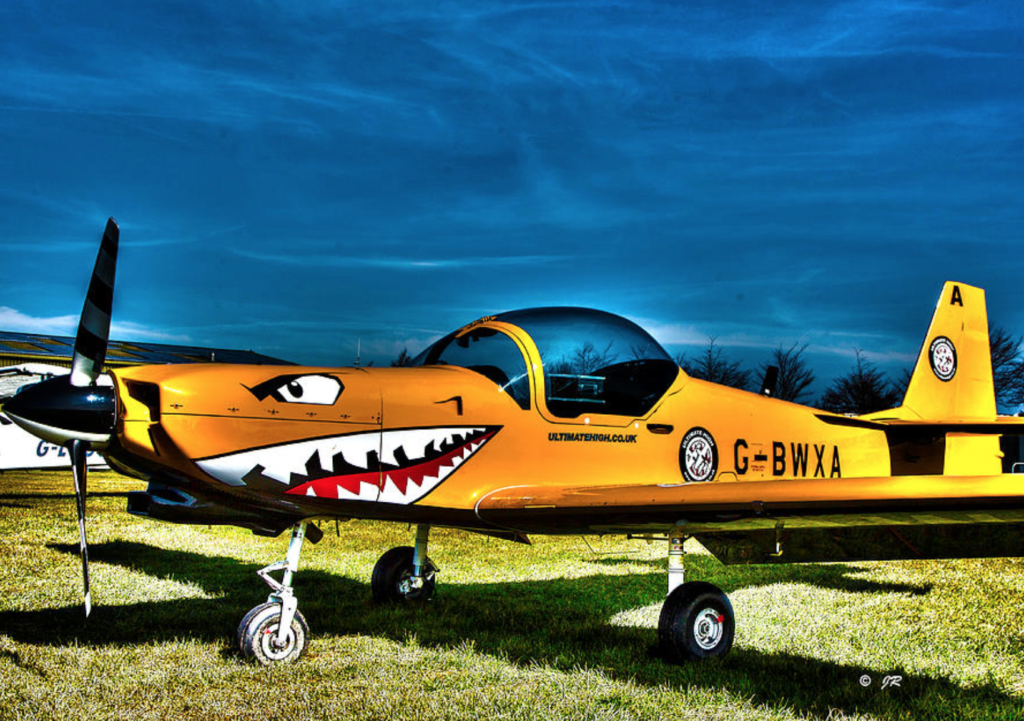
As I strapped into the seat on the Slingsby T67 Firefly, hands quivering, straddling the line between euphoria and fear, I had no idea this heart-pounding adventure would not only unleash a tidal wave of adrenaline but also open a gateway to the world of aviation.
And it wasn’t just about thrill-seeking. The experience also offered a glimpse into the art of flying. As I grasped the controls, feeling the immense power of the aircraft responding to my every move, I was awestruck. This moment planted a tiny seed of fascination for aviation, which, with time, would grow into an enduring and profound passion.
Aerobatics Rekindled
Fast forward to this summer, my journey to the UK with Hong Kong Flight Training Centre (HKFTC) was all about getting some flying experience in a Piper. Tho the itch for another aerobatic experience had been nagging, I hadn’t taken the leap.
But sometimes, fate has its own way of steering your course. It was William, an alumnus of HKFTC, who changed the game. He had travelled to the UK to brush up on his aerobatic skills and work on his instrument rating. Seeing what he was up to stirred the dormant thrill-seeker in me.
Without derailing my training plans, I took the plunge and booked a session in an Extra 330LX with Ultimate Aerobatic. You can always make money, but experiences like this are kinda priceless. They make your life a story worth telling, filled with moments that set your soul on fire.
Extra 330LX vs Piper PA-28
The contrast between the two aircraft was like comparing a F1 racer to a Toyota Corolla. The Extra 330LX roars in the sky with its colossal 315 horsepower engine, making the Piper PA-28’s 160 HP seem rather modest. This raw power translates into a mind-blowing max rate of climb of 3,300 feet per minute (fpm), leaving the Piper’s 640fpm climb in its vapour trail.

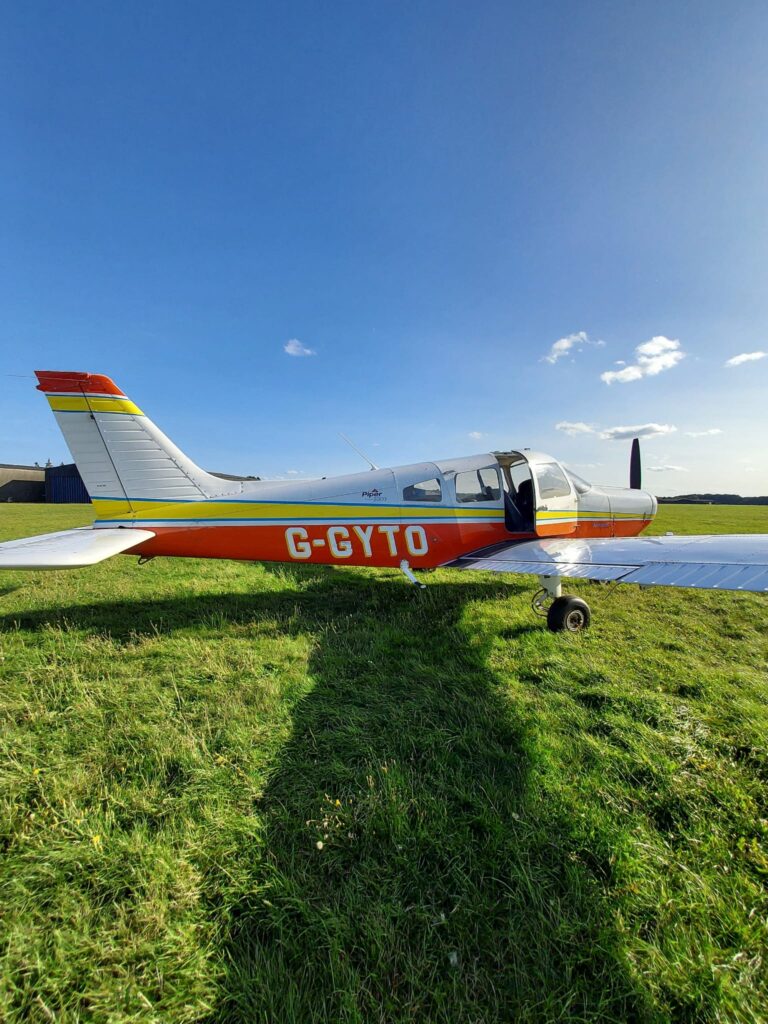
–
Into the Cockpit
Alex Truman, the pilot-in-command, swung the bubble canopy open to the side, revealing the inviting cockpit of the aircraft. This design made it accessible for both front- and rear-seat occupants. And being the student, the front seat was mine to claim.
With both feet on the port side (left side) of the wing, I prepared to make my entry. Before I made the move, Alex informed me a layer of PU foam padding on both the seat and the backrest. It was there to accommodate my height, ensuring I had an unobstructed view of the world outside. (I’d always brought cushions along for my training flights cos i’m short. I’m so gonna start using PU foam for my future flights. I think this is such an ingenious idea.)
Getting into the cockpit required some finesse. . I anchored my right foot onto the foam and gripped the sturdy canopy rail with my left hand. Carefully, I brought my left foot in. I eased into the seat, in a slightly reclined posture, my legs stretching out ahead. Yet, even with the padding, the rudder pedals remained just slightly out of reach.
As I nestled into the cockpit, my attention was inevitably drawn to the intricate inner workings of the aircraft. White steel tubes crisscrossed around, strangely reminding me of the PVC pipes we have back home.
Directly in front of me, the control panel boasted its four key gauges — an airspeed indicator, a G-meter, slip indicators, and an altimeter. The control stick rested snugly between my legs.
Off to my left, near my hip, rested the throttle. But what caught my attention was the sighting device at the wingtip. Crafted to guide pilots through those demanding aerobatics, I wondered about its role in today’s adventure.
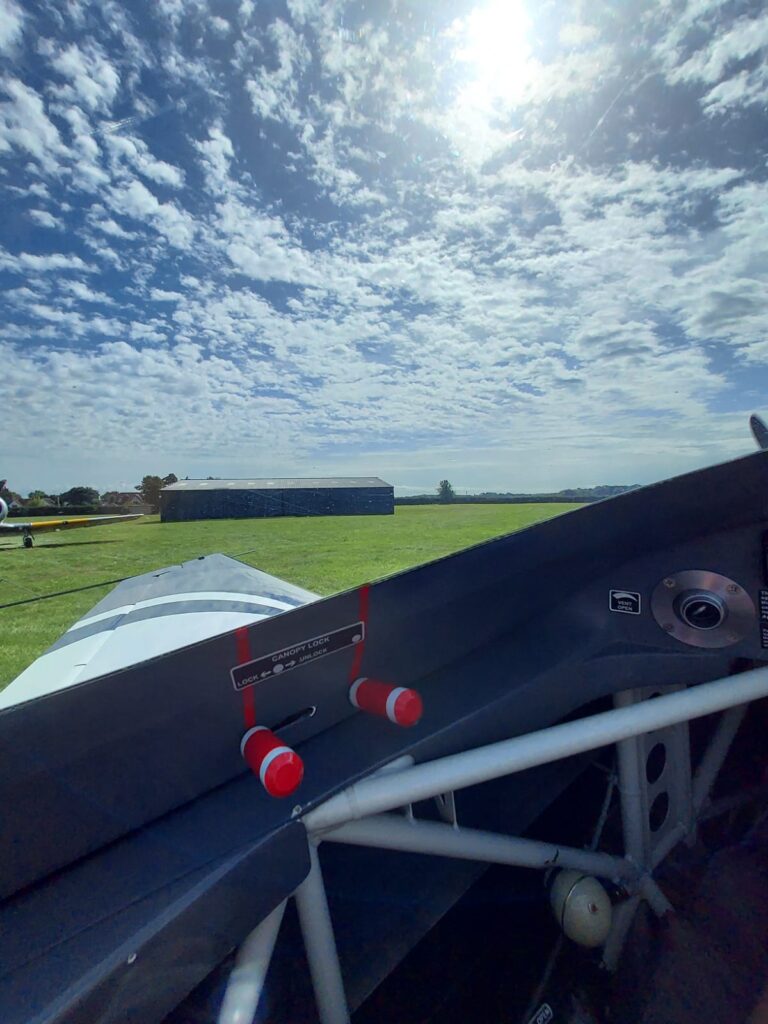
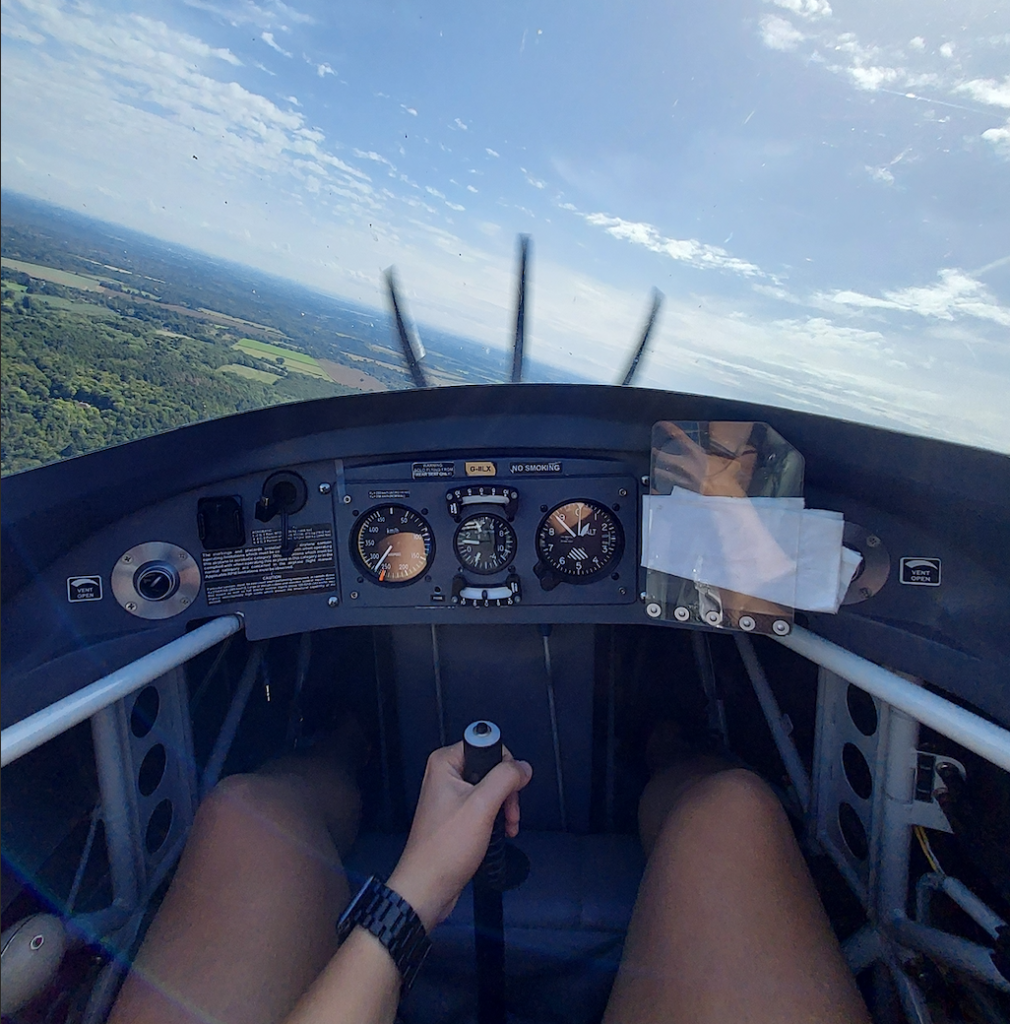
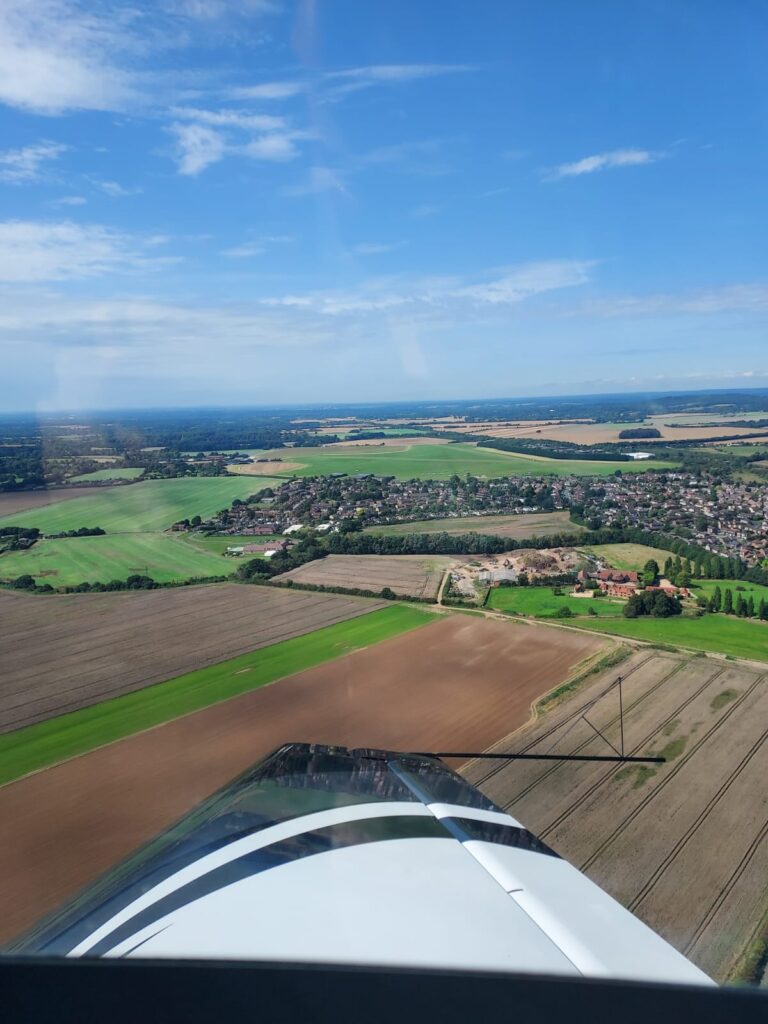
Twenty Minutes of Aerial Ballet
Barely 6 seconds into our takeoff, and we had reached Vr. In what typically takes 10-15 seconds in a Piper PA-28, today felt like I had been strapped to a rocket. The powerful thrust of the Extra and its swift responsiveness set my heart racing.
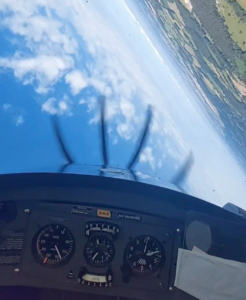
20 minutes. That’s all we had from engine start to landing, but what an action-packed 20 minutes it was! Alex carved the sky with a variety of manoeuvres – Stall Turn, Half Cuban, Loop, Aileron Roll, Triple Flick Roll, Inverted Flight with 45 degree angle of bank etc. Watching him effortlessly transition from vertical rolls to a stall turn, crowned by those ground-facing triple snap rolls during our descent, it was like a choreographed aerial dance routine executed with utmost precision.
I Have Control
Then came my turn.
Even with my feet barely touching the rudder pedals, the instant the aircraft responded to my touch, an overwhelming euphoria surged through me. Having done the manoeuvres myself, the reality hit, aerobatics isn’t just a joyride.
Executing a left flick roll, for example, isn’t just about jerking the stick to the left. First, you grasp the control stick firmly, pulling it sharply to your left, simultaneously, apply full opposite rudder. The rudder pedal input gotta be swift and firm, so to induce the rolling motion and prevent the nose from yawing too far in the direction of the roll. Then in the recovery stage, you pull the stick to the opposite direction gently and smoothly to halt the roll JUST before reaching level wings.
Achieving this airborne precision, compelling the aircraft to mirror your intentions flawlessly, can only be achieved with rigorous practice and an intimate knowledge of the aircraft.
.
As we began our descent, I was introduced to yet another first – a sideslipping approach. The Extra 300LX, with its tailwheel configuration, had a somewhat masked view during approach. To compensate, Alex tilted the aircraft just so, granting us an unobstructed gaze at the approaching runway. This was a revelation. Having honed my skills on the Piper PA-28, I’d never been introduced to this technique. With the ground fast approaching at 90 knots, everything was a stark contrast to my familiar training flights. The sensations were new, every aspect felt redefined.
As the wheels met the grass, a thought lingered in my mind. Aerobatics isn’t just about the highs and the thrills. It’s a journey of discipline, mastery, and a deep bond with your aircraft. As a student, this experience was a profound reminder of the journey ahead and the respect this craft deserves.
◃ Back
I have realized that in old digital cameras, specialized detectors help to target automatically. The particular sensors involving some digital cameras change in contrast, while others make use of a beam involving infra-red (IR) light, specifically in low lumination. Higher standards cameras sometimes use a mix of both models and might have Face Priority AF where the digicam can ‘See’ the face while focusing only upon that. Thanks for sharing your ideas on this blog.
Hey there! I know this is somewhat off topic but I was wondering if you knew where I could find a captcha plugin for my comment form? I’m using the same blog platform as yours and I’m having trouble finding one? Thanks a lot!
Youre so cool! I dont suppose Ive learn anything like this before. So nice to search out someone with some unique ideas on this subject. realy thank you for beginning this up. this website is something that’s wanted on the net, somebody with slightly originality. helpful job for bringing something new to the web!
If you’re even slightly curious about AI marketing, do yourself a favor and subscribe to James Jernigan’s channel. He’s a fantastic teacher, especially when it comes to social media automation and affiliate marketing.
Hello there, You’ve done a great job. I’ll definitely digg it and personally recommend to my friends.
I’m sure they’ll be benefited from this website. https://www.waste-ndc.pro/community/profile/tressa79906983/
This piece doesn’t just inform; it evokes a feeling that stays with you, a quiet resonance.